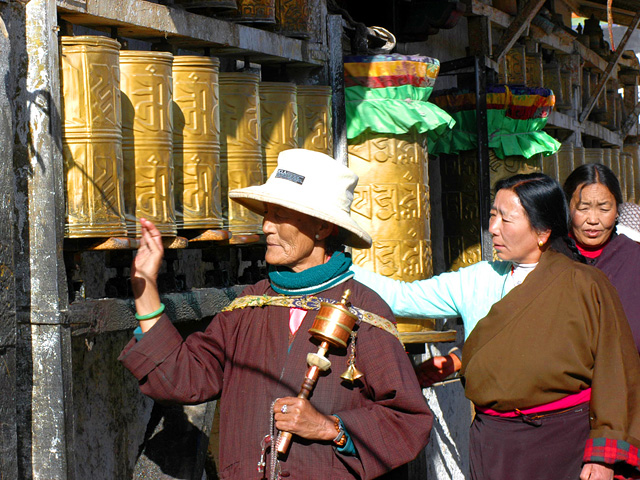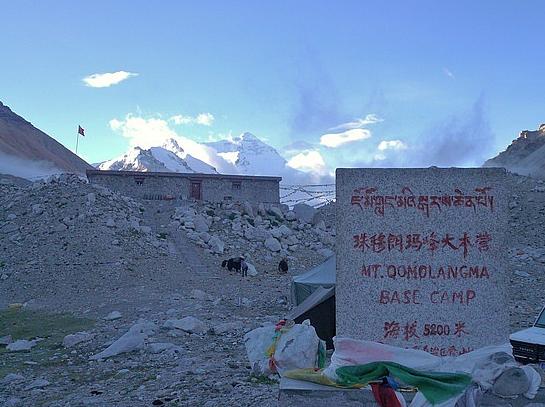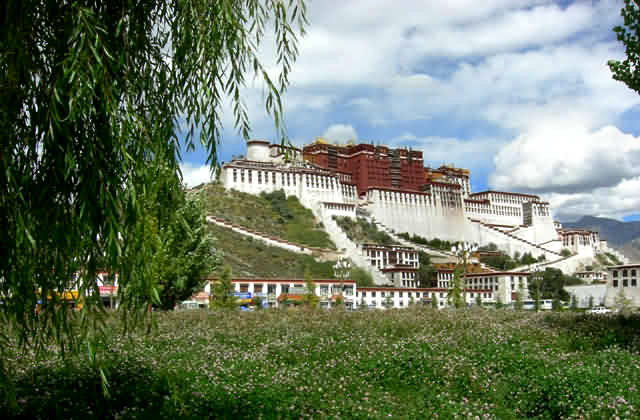Shalu Monastery
Shalu Monastery, also Schalu Kloster, situated 20 kilometers (12 miles) southeast of Shigatse, is a perfect combination of Han and Tibet architectural styles. It was built in 1087 by Jigzun Xerab Qoinnyai. In 1320, it was administered by Master Purdain Renqen Zhuba, a renowned religious scholar who compiled the Tenjur sutra, one of the classic woks of Tibetan Budhism. It is said that about 3,800 monks were drawn to his teaching. Therefore, the monastery became a holy site for many worshipers. In 1329, it was destroyed in an earthquake. It was rebuilt in 1333 under the patronage of one emperor of the Yuan Dynasty (1271-1368). Since many Chinese artisans were assigned to reconstruction work, it integrated both Han and Tibetan architectural styles.
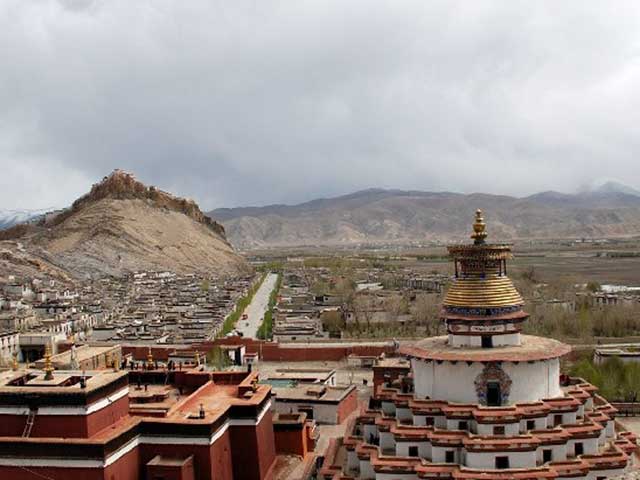 |
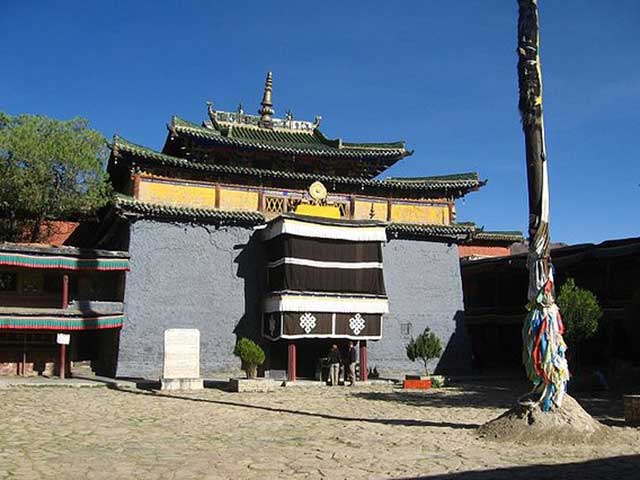 |
| Overview from the the top of Shalu Monastery | Entrance of Shalu Monastery |
Xalhulhakang, the main structure here, is architecturally distinctive. The hall has an arch-like ceiling covered with glazed tiles. The steep eaves are like the wings of a flying bird. The structure is a complete replica of inland temples. The monastery consists of two floors. On the first floor lies a main hall for assembly, covering an area of 1,500 sq meters (1,794 sq yard). The statues of Sakyamuni and his disciples are worshiped there. On either side of the hall stands a sutra depository, where two important classics of Tibetan Buddhism - Tanjur and Kanjur are exhibited. The layout of the second floor is a typical Chinese quadrangle. The four halls stand in a symmetrical order. The murals are exquisitely painted and vivid, demonstrating the features of the Yuan Dynasty's paintings. The portrait of Bodhisattva preserved here is quite different from those of other temples. The artistic style is a combination of Chinese inland and exotic culture.
The four treasures enhanced the charm of Shalu Monastery. The first treasure is the printing board of Tibetan Buddhist scripture. It is made up of 108 blocks of sandalwood and has a long history of 700 years. Having a piece of the sutra board is believed to be very lucky by worshipers. The second is a holy jar made of brass. It is covered and sealed by a piece of red cloth. The water in the jar is said to be the purest water in the world. The water, renewed every 12 years, can cure 108 kinds of diseases and cleanse away filth and dirt. The third is a stone tablet inscribed with six characters. Its edge is engraved with four delicate small pagodas, which were excavated during the construction. The fourth treasure is a huge stone like a basin. It is said the basin would not overflow even if filled on the rainiest day. The Living Buddha Jigzun Xerab Qoinnyai who built the Shalu Monastery always washed his face in the stone basin.
Select Other Favorite Attractions
Guide for China tour, offers most value & amazing experience. In China, you can rely on us
Copyright © 2001 - 2025. All Rights Reserved to ChinaTourGuide.Com
Hotel Guangzhou | Guizhou Tours | Hong Kong Hotels | 香港酒店 | 广州酒店 | 广州会议酒店 | Indochina Tour
Guide for China tours, offers most value & amazing experience. Chinatourguide.com. Your reliable China tour agency.


